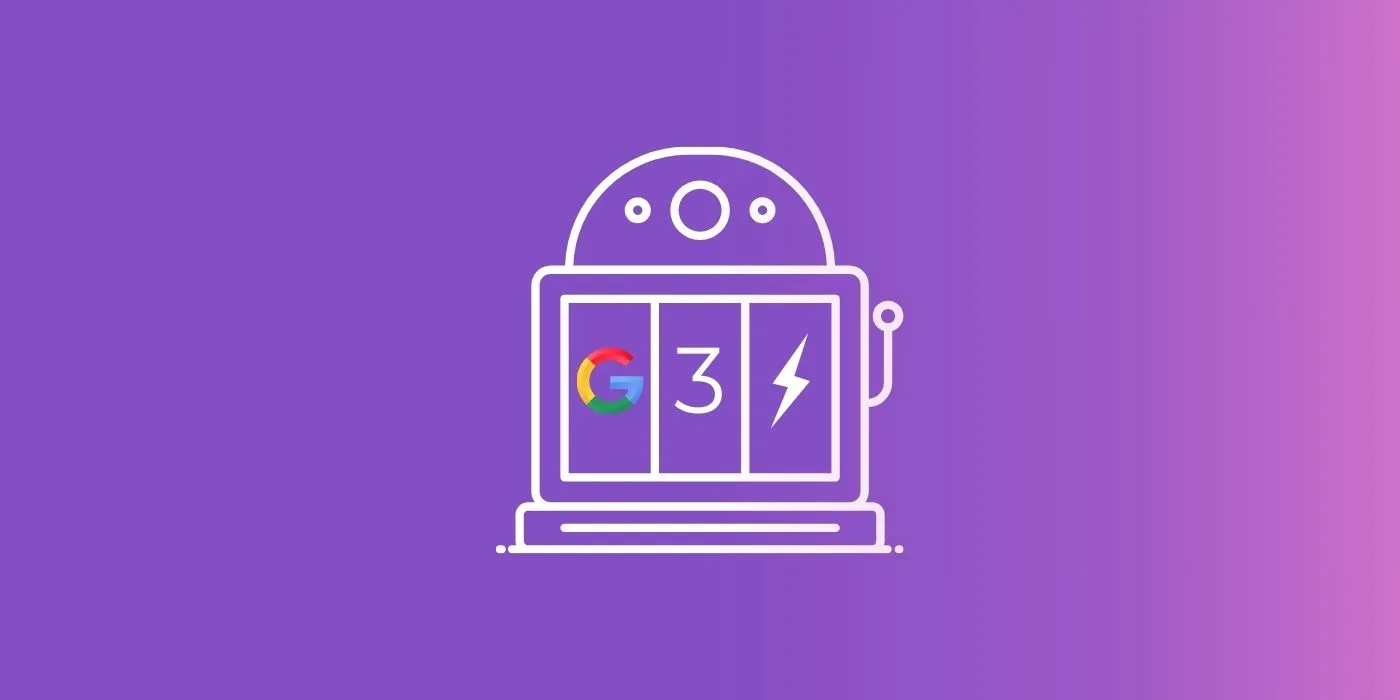B2B SaaS SEO: Best Practices and Strategy for 2025

Key Considerations for B2B SaaS Search Engine Optimization
Search engine optimization (SEO) for B2B SaaS is not a one-time effort—it’s an ongoing strategy that branches into various components. A well-executed SEO plan drives organic traffic, improves lead generation, and enhances conversion rates.
Continue reading below to explore key considerations for optimizing B2B SaaS SEO effectively.
Understanding the B2B Audience and Decision-Making Process
For SaaS companies, a customer-centric strategy is vital—not just in product development but across marketing and distribution. B2B buyers follow a structured decision-making process that can be lengthy, often spanning weeks or months. Monitoring audience needs and pain points is critical for tailoring your SEO approach.
For example, platforms like Netflix and Amazon Prime have continuously evolved based on customer feedback and behavior. Similarly, B2B SaaS companies must adapt their marketing and SEO strategies based on audience insights and industry shifts.
Aligning SEO with the B2B Buying Cycle
Unlike B2C purchases, B2B buying cycles involve multiple decision-makers and extensive research. SEO strategies should align with this cycle, guiding potential customers through different stages:
- Top-of-Funnel (TOFU): Educational blog posts, industry insights, and awareness-driven content.
- Middle-of-Funnel (MOFU): Comparison guides, case studies, and webinars to help buyers evaluate solutions.
- Bottom-of-Funnel (BOFU): Product pages, ROI calculators, and demo requests designed to convert leads.
A targeted SEO approach ensures that your website remains visible and valuable at each stage of the buyer’s journey.
1. Understanding B2B SaaS Audience and Keywords
A strong B2B SaaS SEO strategy starts with audience analysis and keyword research. Identifying the right personas and their challenges helps craft content that resonates.
Identifying Target Audience Personas
Who are your potential customers? What pain points do they experience? Instead of targeting broad markets, focus on your ideal customer profile (ICP). Defining buyer personas allows you to create hyper-relevant content that speaks to specific industries and use cases.
Comprehensive Keyword Research for B2B SaaS
When you have determined your target audience personas, the next step is to identify what’s going through their minds. Concerning your niche product and market, what are their needs and interests?
You don’t need to be a mind-reader to get all this information; conducting comprehensive keyword research for B2B-specific target keywords will do the trick. Choosing the right target keywords is an essential part of the whole B2B SaaS SEO process and one that will realistically help improve your website’s visibility on search engines.
When doing keyword research, “comprehensive” always comes to mind. To rank higher and achieve more visibility, you need to be as specific as possible. You could use B2B-specific modifiers to make your keywords more straightforward.
Keyword research should go beyond high-volume terms and incorporate:
- Long-tail keywords for niche targeting.
- Problem-solving queries that reflect real user concerns.
- Comparison-based keywords (e.g., “[Your Product] vs. Competitor”).
- Transactional keywords to attract high-intent users.
Using SEO tools like Ahrefs, SEMrush, and Google Search Console can help uncover keyword opportunities tailored to your niche.
In the beginning stages, focus on high-volume keywords with low keyword difficulty. Low-search volume keywords or long tail keywords should be included in your effective SaaS SEO strategy as well, until you establish authority and can start focusing on more difficult keywords.
Thankfully, you don’t have to do keyword research manually. There are free keyword research tools that will help you choose high-volume keywords. We’ll talk more about them later in the article.

2. Optimizing On-Page SEO for B2B SaaS
Once you have researched your niche audience and related keywords, the next step is to craft a comprehensive on-page SEO optimization strategy, which largely involves creating high-quality content.
But no matter how informative or entertaining your content marketing strategies are, they won’t matter if even a single individual landing page and blog post doesn’t have the proper tags and labels. This is where on-page SEO comes in.
Crafting compelling meta titles and descriptions
Meta title and meta description comprise the words you usually see on search engines. When you search a keyword or keywords on Google, the results or snippets you see are called meta tags: meta titles and meta descriptions. These are some of the important website’s SEO elements.
While most CMS (Content Management Systems) platforms automatically use your post title and excerpt as your page’s meta title and description, you can make a different version for each. Why should you do that? Here are a few attributes why you need to consider meta titles and descriptions:
- They should be keyword-rich, but be careful not to overdo it.
- Meta descriptions should have a clear CTA (Call To Action).
- Ideal meta titles are typically 60 characters long, while ideal meta descriptions could have up to 160 characters.
Remember, that on-page SEO tags are the users’ first impressions of your website, so you have to make sure you optimize as much as possible.
Utilizing header tags in internal linking to structure content effectively
In any SaaS website, your page categories mean much more than anything else. Whereas blog post and new landing pages thrive on lengthy content that increases users’ session duration, a B2B SaaS website prioritizes effective categorization to point visitors to the products they’re searching for.
Using the correct header tags on your pages will help create content and structure it effectively. Most SaaS web pages, especially enterprise-level ones, have a variety of products that they present on a single landing page. So, when doing B2B SaaS SEO, you have to make sure that you use header tags that are search engine friendly so that search engines like Google can crawl and index it.
An optimized header tag hierarchy will also help improve website navigation, especially if your tags point to their internal links. Remember that you’re not just using header tags for search engine bots or to satisfy search engine algorithms. You’re also optimizing these tags for a user-friendly experience and interface.
Integrating relevant keywords naturally within the content
It’s no secret that a keyword-rich page is more likely to achieve higher search engine rankings, especially if those keywords are relevant and have more than enough search volume. However, you cannot be blatant with the use of these keywords.
You might have gotten away with keyword stuffing a few years back, but Google has since rolled out updates that prioritize high-quality content over only keyword-rich ones.
It goes on to say that integrating relevant keywords naturally is of utmost value when planning relevant content. Your readers should see a coherent flow throughout your page; there shouldn’t be detours or bumps just because you want to put in as many relevant keywords as possible.
There are different techniques for doing this; some B2B SaaS SEO experts plan their content marketing around relevant keywords, while others insert the keywords naturally into pre-written content. Either way, you have to do it as naturally as you can.
3. Content Strategy for B2B SaaS SEO
Along with the product landing pages and pricing pages that are most important for B2B SaaS websites, there are also other avenues for you to insert valuable content. Creating a blog section for your website will always reel in more audience, and other forms of content (like comparison pages and other landing pages) will make your brand more legitimate and trustworthy.
Authoritative and informative content creation
Other websites think of entertainment when they plan their content; for B2B SaaS SEO, it is essential to be as informative as you are engaging. These two attributes should always go hand-in-hand when developing your content strategy. You can’t be too informative to the point that your readers are going through your post.
Your content marketing and individual content pieces should answer the search intent or your target audience as clearly as possible. Without clear answers to their search intent, the audience will simply drop from your website and keep searching for a more clear explanation for their query. So search intent is key for SEO content pieces to rank high on the search engine results page.
When you create content around your audience’s interests, being informative, factual, and engaging with your tone will further grasp your readers’ attention.
Creating in-depth guides, case studies, and whitepapers
You may have freedom with the content you want to put up, but you also have to ensure you’re not wasting your resources or readers’ time. How could this content help your readers’ cause? Can they extract information that will help them make relevant decisions?
To help your audience drive decisions in their lives, your B2B SaaS SEO content strategy should have a healthy dose of in-depth guides, case studies, and whitepapers. If you have a vast library containing these content categories, there’s a massive chance that you will improve your search engine rankings.
In particular, case studies have proven to be a great source of authoritative juice for SaaS websites. Case studies present how a SaaS product has helped address the specific needs of its customers or clients. This does not just inform the reader regarding the product’s features, but it also tells them that the product works.
Addressing B2B audience pain points and providing solutions
As we have mentioned above, any content strategy’s key component is to address pain points and provide solutions. When people use search engines like Google, they are always looking for answers and solutions. For your content to achieve higher visibility in search engines, particularly on the first page, you should have answers and solutions.
To do that, you should always be on top of your audience’s needs and interests. Here are avenues where you could identify the pain points of your B2B audience:
- Use free SEO tools like Google Search Console to analyze the top keywords and queries typed in by your users.
- Monitor audience behavior on social media platforms, including highly informative sites like Reddit and Quora.
- Stay on top of new upcoming technologies coming out of the market and determine their benefits to your target customer base.
- Track user behavior on your website and focus on the products that they usually have their attention on.
4. Building Authority through Link Building
Along with content strategy and addressing your audience’s pain points, there are also other facets of B2B SaaS SEO that you should optimize. One of these facets is building links, which is an integral part of off-page SEO. Collecting backlinks pointing to your SaaS website is always a great way to increase your authority, that is, if you’re getting these backlinks from high-authority B2B sources.
Identifying authoritative B2B sources for backlinks
When venturing into the link-building facet of off-page SEO strategy, you should know that not all backlinks benefit your SaaS web page and overall site. Moreover, engaging in bad link-building practices will do more harm than good, especially with Google tightening its rules around this strategy.
For your reference, here are some practices that you should avoid when putting up your link-building strategy:
- Buying links in the black market or engaging in free link exchanges.
- Investing in too many backlinks instead of focusing on getting links from high-quality sites
- Stuffing keywords in a single article with the hopes of gaining more attention
- Posting spammy comments on high-authority blog posts
These are just some bad practices you should avoid in link building. What you should do instead is to naturally build up your links by contributing beneficial guest blogs or taking advantage of your social media marketing efforts.
Guest posting and contributing to industry publications
As we just recently mentioned, guest posting is one of the most natural ways to build up links. Guest posts are blog posts or articles that you contribute to higher-authority websites. These posts contain helpful information for their readers, and you can also include relevant links that point to your website.
Of course, it goes on to say that most authoritative websites will be initially skeptical when offering to write guest posts. Are you just trying to build links? Or are you trying to build links while also prioritizing how you can provide answers for a specific site’s audience?
So when offering guest posts, you should always check if their niche audience is also in the same or relevant market as your website. This way, you can use your expertise to write content and naturally insert your website’s relevant links into the guest post.
Establishing thought leadership through valuable content
The SaaS space, or any other business industry, is a gold mine for thought leadership content. Many people look up to business leaders regarding life advice and motivational support, which presents many avenues for you to reach a larger audience and even diversify your customer base.
It won’t be effortless; establishing thought leadership is like growing your social media profile. It’s never an overnight thing. There are rare cases that you can go viral, but for the most part, you must stay consistent and patient throughout the process.
If you aim to become a thought leader in your SaaS market, here are a couple of tips to get you started:
- Aim to inform and motivate, not to sell.
- Be consistent with your content frequency.
Of course, you would want for people to link back to your website and boost your link-building SEO efforts. But before that happens, you need to prioritize how you can help their cause first.
5. Technical SEO Considerations for B2B SaaS
Along with on-page and off-page considerations, another significant aspect of doing SEO for B2B SaaS is technical SEO. This refers to how sound the structure of your website is, particularly in terms of mobile responsiveness, UX (User Experience), UI (User Interface), and schema markup.
Read more below for technical SEO considerations for B2B SaaS websites.
Ensuring mobile responsiveness and user-friendly design
Before diving into further technical SEO steps, here’s one important stat that you should know: 63% of Google’s organic traffic comes from mobile devices. A huge part of the world’s population owns a smartphone or tablet, which has become their go-to device for everything they do daily.
So, it’s no surprise that more organic traffic in search engines originates from these hand-held devices. To this point, you should optimize your SaaS website for a responsive and user-friendly interface on mobile gadgets.
While most CMS platforms can make your website mobile-friendly, they can’t do everything. For a higher level of mobile responsiveness, you must avoid putting up too many advertisements and pop-ups and ensure you’re not overstretching your website’s multimedia capabilities.
Optimizing site speed and performance for a better user experience
Speaking of multimedia capabilities and advertisement pop-ups, putting too many elements on one page will certainly affect your website’s loading speed. The average recommended page loading time is 1-2 seconds; anything over 2 seconds might discourage a website visitor from continuing their page session.
Using a faster, more expensive hosting service for your SaaS website could drastically improve your page loading speed. But if you’re still building up your website and you don’t have a lot of resources to pay for an expensive hosting service, you can do these optimization tips instead:
- Compress images into smaller file sizes
- Remove irrelevant images and videos in your media library
- Avoid over-spamming ads and pop-ups on one page
- Opt for a mobile-first code
- Reduce HTTP requests
- Consider using cache plugins
Moreover, you can use online website speed tests to stay on top of your page loading speed.
Implementing schema markup for rich search results
Since being introduced to search engines in 2009, Google Rich Snippets have become a viable source of website organic traffic. These snippets don’t just provide direct information about what the user is searching for; they also provide information or descriptions about your website. These details offer more authority and legitimacy to your website, giving you more reasons to optimize your rich snippets.
For your reference, here are several details that users will see on your snippets, that is if you rank high enough for them to see:
- Images and videos
- Price and availability of your products
- Customer reviews and ratings of your business
- Links to related websites
For Google to use this information you have, you need to use the Structured Data Markup Helper. But before you implement your schema markup, always ensure that the details included in your website are up-to-date and accurate.

6. Local SEO Strategies for B2B SaaS
For a B2B SaaS company, you must increase brand awareness in your target geographic location. After all, this is where your direct customers are located.
Did you know that B2B SaaS SEO can also help you optimize your brand visibility in a specific location? That’s the power of local SEO strategies, which we’ll dive into in the following sections.
Optimizing Google My Business for local visibility
Along with the option of expanding your reach through paid ads, you should know that Google constantly rolls out updates that make it easier for businesses to increase their local visibility. One of these features is called ‘Google My Business’, which lets you optimize your Google business listing.
Some businesses and companies still overlook the value of an optimized business listing in Google. You should not make that same mistake, especially if you want to drive more organic traffic from your target area. To optimize your business listing, here are some tips to get you started:
- Claim your business profile
- Update basic details like your business category, address, phone number, and office hours
- Add photos and information about your products and services
- Respond to both positive and negative reviews
The important thing is to keep all these details up-to-date, especially the descriptions of the products and services you offer.
Nurturing local partnerships and collaborations
With so many business avenues nowadays, there are also more opportunities to forge local partnerships and collaborations. Even if two businesses are in different niche markets, there are some points in which their goals intersect.
So, collaborating with another local business or presence could benefit your SaaS company if the right opportunity presents itself. Diversifying both of your customer bases is possible along with the chance to share expertise and thoughts. You’re increasing your brand’s visibility across a different audience while solidifying your credibility with your existing customer base.
Of course, this could only happen if you choose the right partners. When planning for a local collaboration, ensure that the person or the brand you’re linking up with has a respectable reputation in the community.
Encouraging customer reviews and testimonials
What are the things you do before purchasing a specific product? You canvass first for lower prices, and most of the time, you also rely on recent customer reviews and testimonials.
Before people decide on buying your product or service, most of them turn to the reviews you’re collecting from existing customers. Not all of them can write reviews of your product, even if they had a positive experience. Sometimes, you have to request customer reviews, especially if you know your product has a good reputation.
Along with putting up a dedicated review section on their website and social media platforms, some SaaS companies create a referral program to reward existing users when they refer their friends to your product. This program serves as word-of-mouth marketing, where existing customers spread the word about how good your product or service is.
7. Analytics and Performance Tracking for B2B SaaS SEO
B2B SaaS SEO is one form of digital marketing strategy that has intimidated many people from doing it. While there are so many terms and terminologies connected to SEO, a critical benefit of digital marketing is you also have tools that help you monitor your campaign performances.
Setting up B2B-specific SEO analytics tools
If you’re looking for a B2B-specific SEO analytics tool to help your cause, you’ll be pleased to know that there is an abundance of it. Even niche tools provide solutions for each facet of SEO, whether that’s in keyword research, page indexability, backlink check, or page loading speed.
While most of these tools have paid versions you need to subscribe to, there are free versions too. For one, Google offers free-of-charge tools like Google Trends, Google Search Console, and Google Analytics. You just have to link your CMS platform to these tools, and you’re good to go.
Of course, other paid tools offer optimization services for B2B SaaS SEO. Here are some names for your reference:
- Ahrefs
- Semrush
- Moz Pro
- Surfer SEO
- Keywords Everywhere
- Ubersuggest
- Screaming Frog
- SpyFu
- Clearscope
Whether it’s a free or paid SEO tool, the important thing is you know how to maximize its capability.
Monitoring key performance indicators (KPIs) for success
When doing B2B SaaS SEO, keeping an eye on everything is impossible. Just like an inverted pyramid, there are SEO considerations that you should mark as your priority, depending on the nature and needs of your website. These are called KPIs (Key Performance Indicators), which are factors that have the highest chances of increasing your website’s visibility and authority.
The big picture in creating a SaaS website is to drive organic traffic in the hopes of seeing more conversions. To this point, here are the KPIs you need to monitor when doing SEO for B2B SaaS:
- Organic traffic
- Form submissions
- Bounce rate
- Product landing pages
- Page loading speed
- Errors in crawling and indexability
- Backlink quality
Analyzing data to refine and adapt SEO strategies
As you’re keeping track of these KPIs, it’s also essential that you’re adapting to the trends and changes in the SEO space. You should never forget that Google regularly updates its rules and considerations, so the SEO strategy you have today might not be as effective in a few months.
That said, you need to be as responsive as possible. If one of your SEO campaigns is not working anymore, you must be willing to pull it out and refine it to boost its effectiveness. This way, you’re adapting your content to the ever-changing nature of the SEO space and your customers’ interests.
![]()
8. User Experience and B2B SaaS SEO
If you have a website that is intuitive and easy to use, there’s a higher chance that your users will stay longer on your site. Learn more about the importance of UI and UX in the sections below.
Focusing on intuitive website navigation
Your website should not look like a treasure map to your visitors. Navigating through your website should not be a maze-like experience; it should be straightforward. There should be a seamless transition from one page to another.
Achieving an intuitive website navigation is crucial for your success. To achieve this goal, here are some characteristics that your website should have:
- Consistent and accurate categorical items
- Use of visual elements as guidance, not just as decorations
- Clear, moderately filled pages for ease of use
While it’s true that you should also make your website aesthetically pleasing, your priority should still be on ease of use when it comes to navigation.
Enhancing call-to-action buttons for lead generation
A CTA (Call-To-Action) is already an overused yet effective component of any form of marketing. In digital marketing, such as B2B SaaS SEO, your CTAs could come as a button, image, or text link that you can place on various locations.
So, your CTA button should be prominent. Whether you put it on the top, on your sidebar, or in the middle of a case study, your CTA button should stand out for you to generate as many leads as possible.
Creating a seamless and informative user journey
The user journey on your B2B SaaS website should be as personalized as it can be. If a user clicks on this particular link, does it direct them to a page that is relevant to what they’re searching? There should be a seamless stream of information as visitors move from one page to another.
Most UI and UX designers plan this logical flow for a long time. But for your planning efforts to be successful, your interface will undoubtedly go through different trial-and-error phases. You can do this by testing the interface or requesting feedback from focus groups and random users.
9. Future-Proofing B2B SaaS SEO Strategy
Your B2B SaaS SEO strategy isn’t a one-off plan you’ll just execute and leave out. With the advent of AI (Artificial Intelligence) and ML (Machine Learning), you should always bear in mind that the SEO space will undergo numerous changes year by year.
Staying updated with search engine algorithm changes
Search engines, especially Google, roll out multiple algorithm changes yearly. Google releases monthly updates, some of which involve changes in its search engine’s core algorithm. These updates could affect your website’s performance, especially regarding your visibility and click-through rates.
You should be dedicated to monitoring these changes, especially if you’re just gaining some traction in search engine results. Following SEO news websites like Search Engine Journal, Search Engine Land, and Google’s updates will have you up-to-date with these algorithm changes.
Failing to adapt to recent updates will not penalize your website, but you will lose out on organic traffic that could have driven more conversations to your SaaS product.
Preparing for voice search and emerging SEO trends
Sooner or later, you’ll see more people voicing their Google searches rather than typing them on their devices. The continuous development of Bluetooth devices and AI-powered platforms is contributing to the eventual rise of voice search capabilities. It’s no longer a myth anymore, as in other emerging trends in the SEO space.
To help you stay on your toes, here are some of the emerging B2B SaaS SEO trends that you might want to keep an eye on for the next few years:
- Algorithm changes in product landing pages
- Priority on audience-targeted content, not on keyword-rich pages
- Bigger presence of videos in search engine results
- Tightening rules on AI-generated content
- Changes in zero-click results like rich snippets
Adapting to evolving B2B buyer behaviors
It’s fitting to end this section by emphasizing the evolving behaviors of B2B buyers. Many factors influence B2B buying behavior, most of them coming from trends and changes in the niche market. Along with niche market changes, other external factors like geographical economy exist.
Most importantly, B2B buying behavior could be influenced by the product itself. If you introduce changes, even minimal ones, to your product, you should anticipate changes in your customers’ buying behavior.
Conclusion
Doing B2B SaaS SEO is a process that requires consistency and responsiveness. You need to be patient with the results and adapt to the ever-changing nature of your niche market and the SEO space.
Most importantly, all these on-page, off-page, and technical SEO considerations won’t matter if you don’t know where your niche lies. Unless you’re an enterprise-scale SaaS company, expanding into different audiences is not as effective as focusing on a niche customer base.
So, to wrap it up, producing a customer-centric B2B SaaS SEO strategy for your niche audience is crucial for both your short-term and long–term growth.
Fortis Media B2B SEO agency is dedicated to providing outstanding outcomes for clients. Don’t wait, contact us now and accelerate the achievement of your goals.
Read our other articles

iGaming SEO: The Ultimate Guide to Ranking iGaming Sites in 2025


How SEO and PPC Work Together: A Practical Guide


What is a PPC Agency? A Comprehensive 2025 Guide






